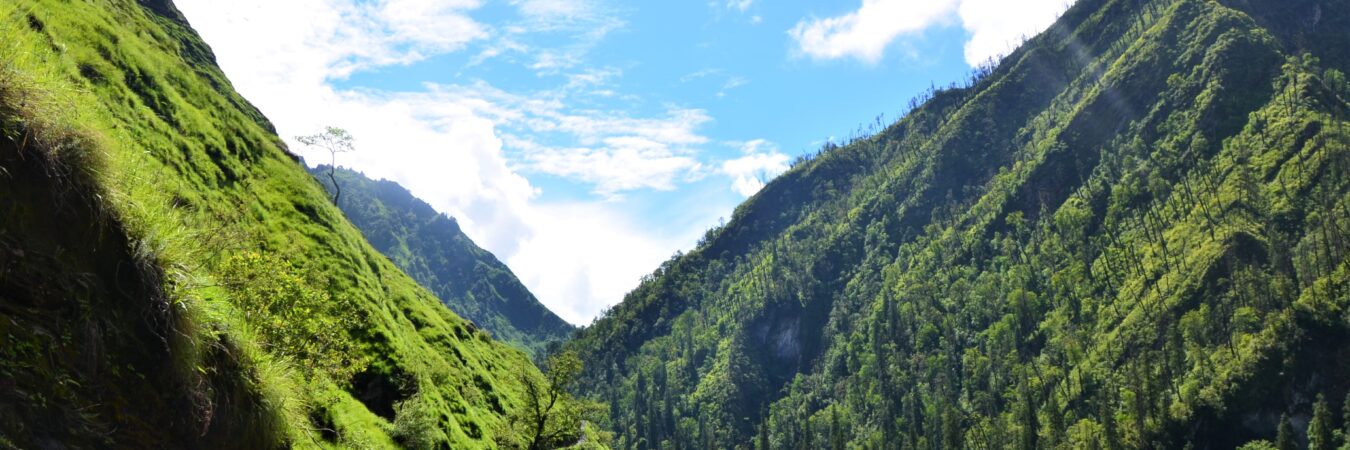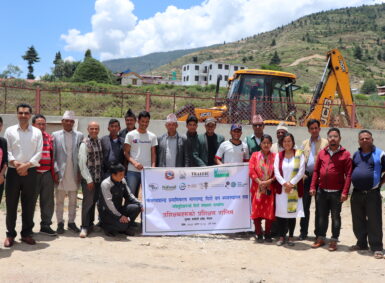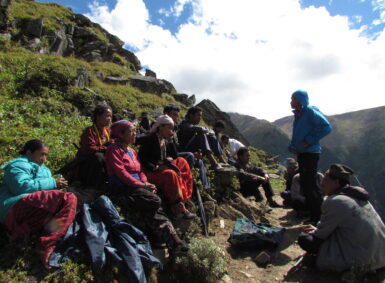
Scaling conservation of Himalayan plants and fungi through sustainable trade
- Starting Date:
- April 1, 2024
- Ending Date:
- June 30, 2029
- Location:
- Darchula, Bajhang, Bajura, Humla, Dolpa, Jumla, Mugu, Rukum East, Gorkha and Taplejung districts of Nepal
- Donor(s):
- Funded by the UK Government through Darwin Initiative
- Implementation Partner(s):
- TRAFFIC; FECOFUN (Federation of Community Forestry Users Nepal); FairWild Foundation; University of Copenhagen; University of Oxford; Tribhuvan University; Worldwide Fund for Nature India (WWF India)
Nepal’s alpine Himalayan forests and rangelands are globally recognized as exceptional biodiversity hotspots. Over 40 key wild plants and fungi are harvested from these regions and traded internationally, playing a vital role in the livelihoods of rural communities. However, these resources face significant threats from premature and overharvesting, climate change, illegal trade, and inequitable supply chains. Additional challenges include inadequate information on sustainable harvest volumes, the need for effective resource management procedures, and an inadequate approach to resource monitoring and trade regulation. Despite these challenges, there are substantial opportunities to enhance the sustainability and trade of wild-harvested forest products. This includes scaling up, previously implemented, successful pilot programs in Nepal and connecting with major markets like India and China. Thus, this project was designed based on the successes and achievements of two earlier initiatives: “Succeeding with CITES: Sustainable and Equitable Jatamansi Trade from Nepal“ and “Himalayan Plants for People: Sustainable Trade for Biodiversity and Development“, implemented in Nepal’s Western Himalayan region between 2018 and 2024.
This project aims to enhance local livelihoods, elevate traditional knowledge, and strengthen national and regional approaches for sustainable biodiversity-based trade. At its core, the project will contribute to support the sustainable management of Himalayan wild plants and fungi by developing value chains that promote equitable trade, increase value addition, alleviate poverty, and conserve species along with ecologically fragile landscapes. The project will work is to conserve floral and fungal diversity in 10 mountainous Himalayan districts: Darchula, Bajhang, Bajura, Humla, Jumla, Mugu, Dolpa, Rukum East, Gorkha, and Taplejung districts of Nepal. This will be achieved through the empowerment of resilient communities, the strengthening of policies, and the development of responsible value chains.
The project will deliver the following outputs:
- Improved capacities and capabilities of stakeholders, especially women and excluded groups, for better conservation, resource management, and sustainable trade;
- Enhanced livelihoods for over 10,000 harvesters through long-term, sustainable, and equitable trade in NTFPs;
- Sustainable management of over 110,000 hectares of high-altitude Himalayas through participatory land and species management and monitoring approaches;
- Establishment of sustainable value chains for Himalayan wild NTFPs, from harvest to consumers, based on traceable and certifiable production systems; and
- Inclusion of provisions for sustainable and traceable trade in wild plants and fungi in trade agreements and legal frameworks of Nepal, the region, and key importing countries.
This project is in line with Nepal’s commitments to biodiversity conservation and poverty alleviation as outlined in the National Biodiversity Strategy and Action Plan. It also supports several national frameworks, including the National Adaptation Plan (particularly Priority Programme 19, which focuses on mapping NTFPs and medicinal plants), National Forest Policy 2019 (which promotes the processing, certification, entrepreneurship, and export of NTFPs and MAPs), National Climate Change Policy 2019 (which includes an action plan to conserve rare and endangered plants), Forestry Sector Strategy 2016, and the Forest Act. Additionally, the project supports international agreements such as the Convention on Biological Diversity (CBD), CITES, and the Global Goals for Sustainable Development (SDGs).
Ministry of Forests and Environment, Nepal; Nepal Herbs and Herbal Products Association (NEHHPA); China Association of Traditional Chinese Medicine (CATCM); China Standard Conformity Assessment Co. Ltd. (CSCA); and Terra Himalaya Pvt. Ltd. are project collaborators.
KNOWLEDGE PRODUCTS
Project Brochure (English version)
NEWS
ANSAB organizes project inception workshop for “Scaling conservation of Himalayan plants and fungi through sustainable trade”
New project to support communities and prevent biodiversity loss in the Himalayas



